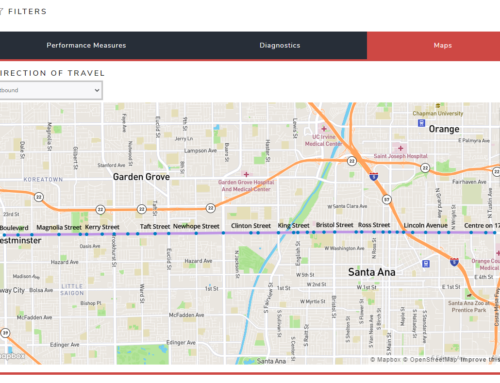Our CEO, Eimar Boesjes, was invited by Prof. David Hurwitz at Oregon State University to give a guest lecture in Hurwitz’ Masters of Transportation Engineering program. This 50 minute video gives an overview of the current state of the art in using connected vehicle data for transportation analytics. In a quick pace Eimar covers how data is collected, the different types of data as well as the transportation analytics supported by each. High-frequency connected vehicle data, for instance, can be used for safety analytics but Location Based Services (LBS) data from mobile apps does not have a high enough temporal frequency for this use case. Mr. Boesjes also covers the immense growth of connected vehicle data. Whereas Moonshadow was processing 100 million waypoint records per day a year ago it is processing 50 billion waypoints every day right now, a 500x increase in just one year.
Mr. Boesjes shows how connected vehicle data needs to be fused with other sources of data before it can be used for transportation analytics. Trips start with an Origin, have a number of waypoints and end with a destination. Waypoints need to be snapped to roads, effectively fusing data from OpenStreetMaps or another mapping platform with connected vehicle data. Origins and destination need to be snapped to cities, census tracts or TAZs. Data coming from public transit vehicles need to be combined with data from trucks, passenger vehicles, bikes or pedestrians. Weather data needs to be combined with trips data to analyze traffic patterns on rainy or icy days and so on.
The presentation ends with an overview of the work Moonshadow and Wejo did for the Eastern Transportation Coalition where data from 2.5 million vehicles was used in real-time to provide six State DOTs with live information on hurricane evacuation traffic.
This lecture is also a call to action from industry for engineering students; computer scientists speak data, transportation engineers speak transportation and it is often difficult to bridge this gap. We need more transportation engineers who understand big data to help make sense of the mountains of mobility data and make transportation safer, more equitable, more efficient and less polluting.


